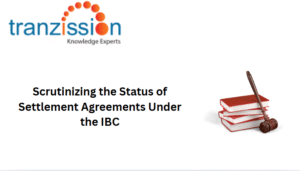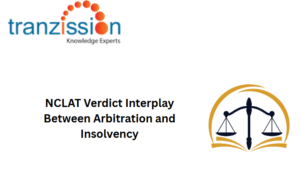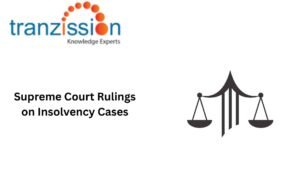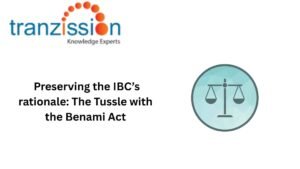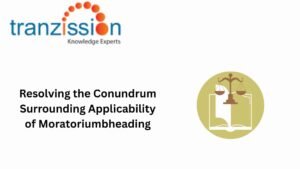
Section 4 of Negotiable Instruments Act

Table of Contents
When a company or individual becomes insolvent, when they cannot meet their financial obligations, they enter insolvency proceedings. Creditors have to file their claims with the Adjudicating Authority, the National Company Law Tribunal (NCLT). These claims, including those based on promissory notes, are then assessed and ranked according to their priority for payment. Promissory notes are defined by the Negotiable Instruments Act, of 1881 (NI Act) and are included in the resolution plan and distribution of proceeds in liquidation.
Understanding Section 4 of the Negotiable Instruments Act, 1881
What is a Promissory Note Under Section 4?
Section 4 of Negotiable Instruments Act defines a promissory note as a written, unconditional promise made by one party (the maker) to pay a certain sum of money to another party (the payee) either on demand or at a specified future date. This definition is the foundation for understanding what constitutes a legally binding promissory note in India.
Essential Elements of a Valid Promissory Note:
Upon reading the definition of a promissory note, the essential elements of a valid promissory note can be listed as under:
- An unconditional undertaking to pay
- A definite sum of money
- The name of the payee
- Signed by the maker
- Must be in writing
Legal Framework & Judicial Interpretations of Section 4
Supreme Court & High Court Rulings on Promissory Notes:
Indian courts have consistently ruled that promissory notes are legally enforceable if they meet the criteria outlined in Section 4. Any failure to specify an unconditional promise or sum payable can render a promissory note invalid.
Legal Distinctions Between Promissory Notes & Other Negotiable Instruments:
It is necessary to understand the distinctions between promissory notes and other instruments, such as bills of exchange and cheques. A promissory note is a direct promise to pay, while a bill of exchange requires an acceptance from the drawee. Additionally, cheques are payable on demand and are drawn from the bank, whereas a promissory note may have a future payment date.
Stamp Duty and Notarization Requirements for Promissory Notes:
In India, promissory notes exceeding a specified amount must be stamped as per the Indian Stamp Act, 1899 and notarization is recommended for added legal security but is not mandatory in Negotiable Instruments Act
Role of Promissory Notes in Insolvency & Debt Resolution
Admissibility of Promissory Notes in Insolvency Proceedings:
In insolvency and debt resolution, promissory notes serve as legal instruments that establish a clear record of the loan, including terms, repayment schedules, and interest rates, which can be used as evidence of a debt in legal proceedings. For instance, it can be used to file claims against the debtor and Creditors can submit promissory notes as proof in corporate the insolvency resolution process (CIRP) under the Insolvency and Bankruptcy Code, 2016 (“the IBC”).
Using Promissory Notes for Debt Restructuring:
Promissory notes are often used in restructuring agreements where distressed businesses agree to pay creditors over a defined period. Hence, they help maintain creditor trust while allowing financially troubled companies to avoid liquidation.
Enforcing Promissory Notes Against Insolvent Debtors:
When an insolvent company or individual defaults on a promissory note, creditors can file claims before the National Company Law Tribunal (NCLT), as per the IBC. Further, courts have upheld that properly executed promissory notes hold legal weight in insolvency proceedings.
Challenges in Enforcing Promissory Notes
Defenses Against Promissory Note Claims in Insolvency:
One of the major issues regarding its enforcement, is the evidentiary value of the promissory note. Debtors often dispute promissory note claims by alleging forgery, non-execution, or lack of consideration.
Legal Risks of Unstamped or Improperly Executed Promissory Notes:
Promissory notes are not considered legally enforceable if they are not according to the specifications under section 4 of Negotiable Instruments Act. Therefore, unstamped promissory notes may not be admissible as evidence in court.
Challenges in International Enforcement of Promissory Notes:
Enforcing promissory notes internationally presents challenges due to differing legal systems, jurisdictional issues, and potential difficulties in recognizing and enforcing foreign judgments.
Case Studies – Legal Precedents on Promissory Notes
In insolvency proceedings initiated under the IBC, the NCLT has held that promissory notes often focus on whether the debt represented by the note is a “financial debt” and whether the creditor has a valid claim, as evidenced by the promissory note and other relevant documents. The NCLT has also considered a case where the corporate debtor had issued six promissory notes and examined the validity of the promissory notes and the corporate debtor’s liability.
Best Practices for Drafting & Enforcing Promissory Notes
To draft a legally sound and enforceable promissory note, ensure it’s in writing, and include all parties’ names and addresses, the loan amount, repayment terms, interest rate (if applicable), and the signature of all parties involved. It is necessary to include all essential elements such as unconditional payment terms and use appropriate stamp duty to avoid legal disputes. To strengthen creditor protections in promissory note agreements, it is crucial to use legally binding contracts to accompany promissory notes for added protection and obtain personal or corporate guarantees where applicable. Leveraging digital tools for managing promissory notes, such as blockchain and e-signatures, can help authenticate and secure promissory notes in financial transactions.
The Future of Promissory Notes in Financial & Insolvency Law
Introducing a digital alternative to traditional paper-based promissory notes can improve its security and transparency, while streamlining the overall process, like digital promissory notes and e-notes. To strengthen legal frameworks for cross-border promissory notes, international organizations like UNCITRAL are developing model laws and conventions to ensure the legal validity and enforceability of electronic transferable records, including promissory notes, across borders. Currently, India has not adopted the UNCITRAL Model Law on Cross-Border Insolvency fully yet, but when it does, the insolvency framework on cross-border cases will significantly improve. The Insolvency and Bankruptcy Board of India (Liquidation Process) Regulations, 2016, under Regulation 22 deals with the production of bills of exchange and promissory notes, or other negotiable instruments by the creditor as a claim. However, there is regulatory oversight for promissory notes in insolvency cases, which the IBBI can address with legal amendments to the IBC.
Read more : Section 148 of negotiable instrument act
Conclusion
Section 4 of Negotiable Instruments Act, is crucial for defining and regulating promissory notes in India, as it provides the legal framework for understanding what constitutes a promissory note and the conditions under which it is enforceable. A promissory note serves as a written acknowledgment of a debt, clearly outlining the terms of the loan, including the principal amount, interest rate, and repayment schedule. This document provides concrete evidence of the debt owed to the creditor, making it easier to prove their claim in insolvency proceedings. Further, it can help prevent disputes and misunderstandings regarding the debt, making it easier to determine the creditor’s rightful claim in insolvency.

